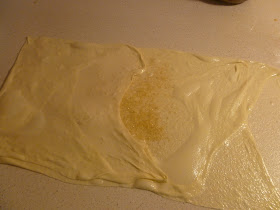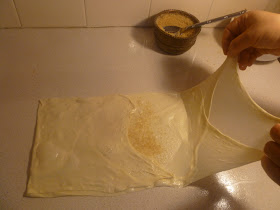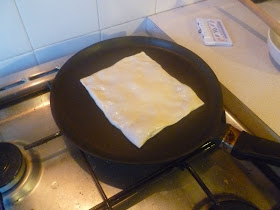They will later on be reheated on a frying pan or in the oven to be enjoyed with tea or coffee later in the afternoon or the following mornings. If they have no filling you can spread them with your favourite jam or drizzle them with honey.
My mum used to save a little packet for me and later on for my sisters when we were studying at the university especially in the winter. ‘That will keep you warm for the morning’ she would say. May God bless you ya Yemma.
My Mssemen comes in three forms
· Plain
· Stuffed with a sprinkling of brown sugar
· Stuffed with a sprinkling of brown sugar and nuts (pistachios)
Ingredients:
Filling:
Brown sugar
Pistachios or any other nuts (coarsely )
Dough:
750 g fine semolina
2 tbsp salt
Water (about 800ml)
Vegetable oil (about 1 mug)
Steps:
1. Mix semolina and salt. Slowly add water until you get a ball of dough.
2. Keep sprinkling more water (gradually) and work the dough vigorously until it becomes soft but not sticky.
3. Oil your fingers; divide the dough into small balls about the size of an egg. Put them on an oiled tray, cover and let it stand for 30 minutes
4. Spread dough on an oiled surface, by flattening and stretching it to form a very thin sheet.
5. Spread a tbsp of stuffing in the middle of the sheet (skip this step if you want it completely plain).
6. Fold two sides of the sheet, then the other two to form a square.
7. Drizzle with oil and bake on a lightly oiled griddle or a good quality frying pan
















































